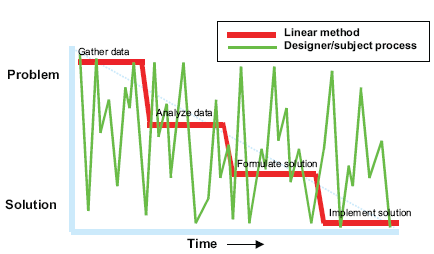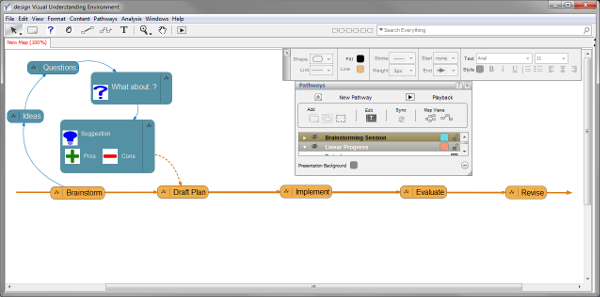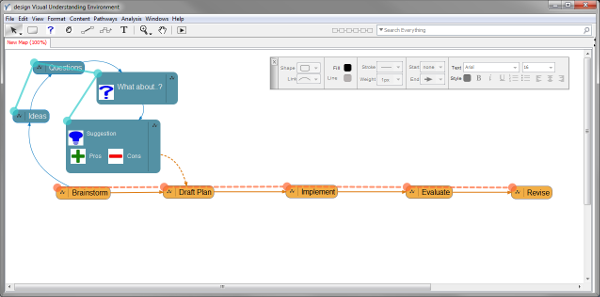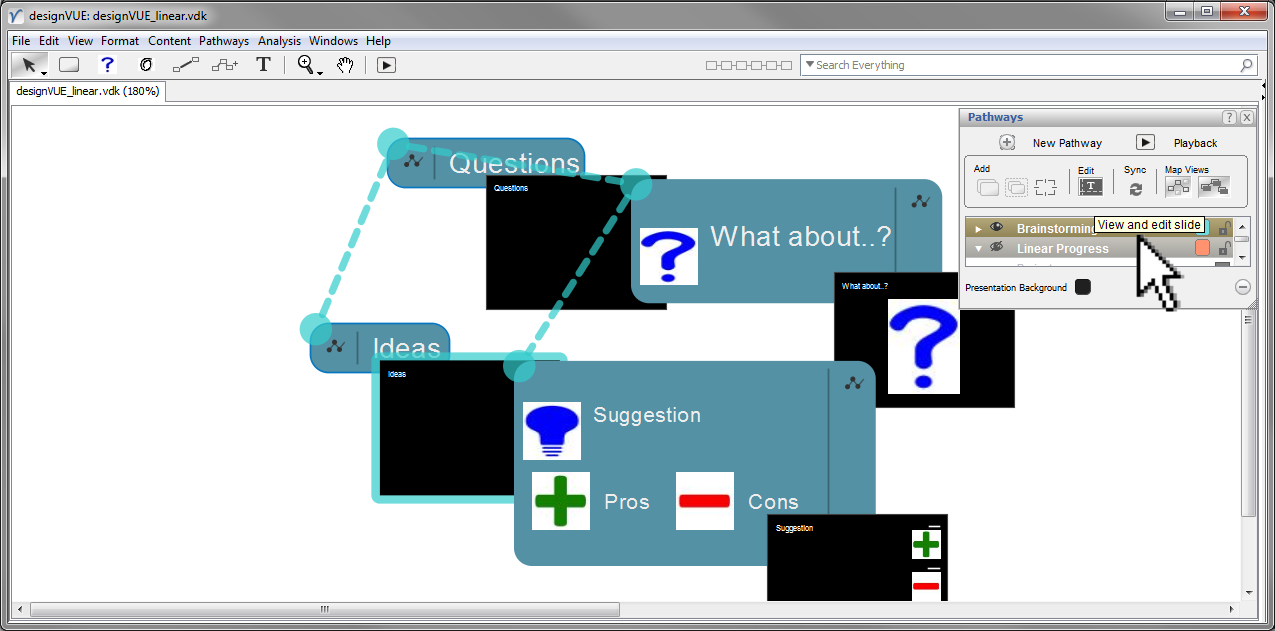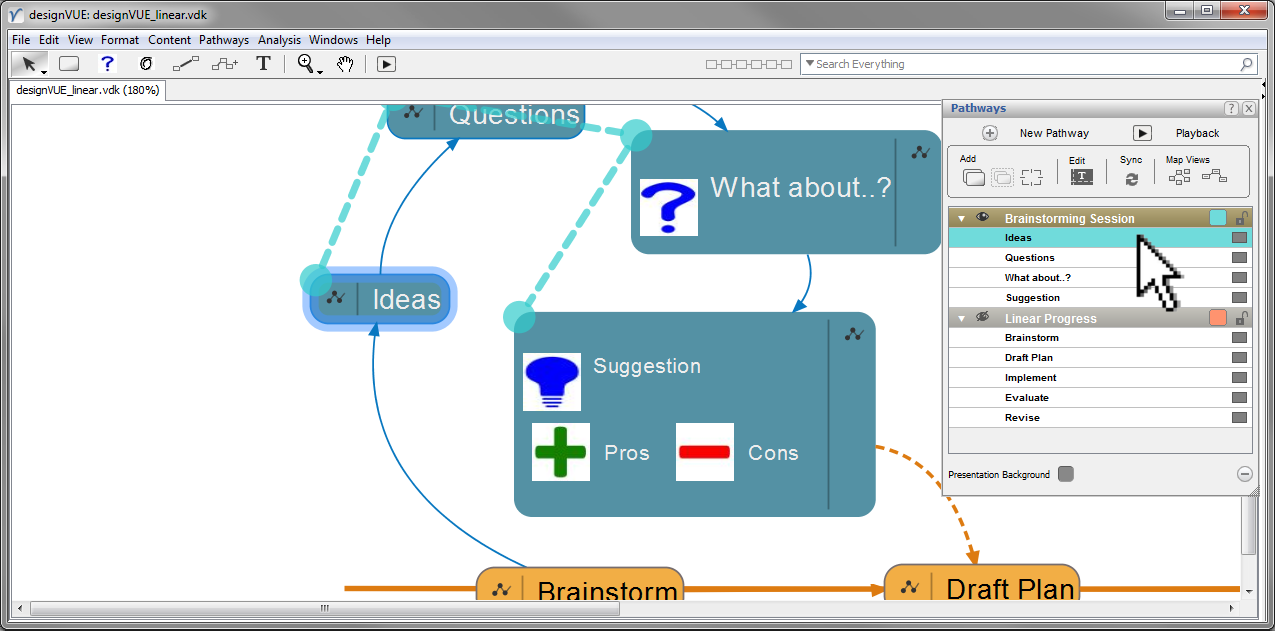ABSTRACT: “Think tanks” can mean a large number of a wide range of advocacy groups. They advocate causes that might be of interest to groups large or small, powerful or weak. They vary by ideological perspective. In a critically thinking democratic society, education has been seen as an underlying necessity, a prerequisite to matters of character, citizenship and civilization. Education must be geared to differentiate between ideologues who engage in wishful thinking, and those who form opinions by rational, dialectical synthesis of opposing arguments based on their merit — those who engage in what we call critical thinking. Critical thinkers owe it to themselves, their neighbours, and their fellow citizens to engage in good faith within the public sphere. Serious educators, devoted to research-based learning and teaching, have at least a 4-decade head start in the learning theory department. That’s roughly as long as “free market” neo-liberals and neo-conservatives have been building a powerful anti-public rhetoric. But there’s simply no point engaging with ideologues who may be science deniers and the people we can refer to as free-market “fetishists” or “obsessionists.” Milton Friedman’s conflation of Freedom and Greed contributed to the immense disconnect from traditional Revolutionary values that typifies the “unfettered free markets” discourse. The Founders and the People shared a love of science, the arts and learning—and a deep understanding of its vital role in democracy—that underpinned a 300-year commitment to public education.
“Tanked” thinking — 100 years, 4 waves (makes and models)

Diane Stone [Marie Curie Chair & Head of the Public Policy Program, Central European University] in her 2005 report “Think Tanks and Policy Advice in Countries in Transition,” prepared for the Asian Development Bank Institute says the term ‘think tank’ originated at the RAND Corporation. She presents a 100-year overview, and tells us they are not the same in the East and West. We in the west regard think tanks as “…relatively autonomous organizations with separate legal identity that engage in the analysis of policy issues independently of government, political parties and pressure groups” (Stone, 2005, pg. 3). Over roughly the last century they have presented in at least 4 waves of growth: think tanks prior to WWII, were predominantly Anglo-American [e.g., Brookings Institution, the Russell Sage Foundation. In the UK, the Fabian Society…]. These “…First generation think-tanks were responses to practical problems spawned by urbanization, industrialisation and economic growth early in the 20th century” (pg. 3).
From WWII to the 1970s think tanks spread throughout the liberal democracies of Europe. The New Deal and the Great Society were, “…a boom-time for ideational actors…” among them the Urban Institute. These tanks were characterized by “…the proliferation of foreign policy institutes, centres for the study of security and development studies institutes, in an era defined by the Cold War, superpower rivalries and the emergence of Third World issues” (pg. 3).
Since the 70s think tanks have spread across the globe in response to economic and political changes and turmoil. They’ve become an industry, drawing increasingly on corporate funding and, quite predictably, advocating and developing policy that entrenches those interests. Says Stone, “The rise of the so-called ‘New Right’ think tanks also illustrates how policy uncertainties provide a window of opportunity for these institutes to help execute the paradigm shift away from Keynesian policy making to what is regarded in other parts of the world as elements of the Washington Consensus. That is, privatisation, financial liberalisation and deregulation” (pg. 3). The Heritage Foundation and various Charles and David Koch activities belong to this opportunistic group.
The 4th Wave is qualitatively different. It is characterised by “…new modes of interaction that are propelled by the forces of globalisation and regionalisation” (pg. 4). This doesn’t imply an entirely new set of players. It means those with the most practice—and dollars—can focus and refine a message padded by decades of ground work, while there’s no shortage of snakes in suits willing to read any script.
In the tinkle of “Trickle Down”
Think tanks are a profitable industry. “Western style think tanks emerged in large numbers and many have prospered. The challenges of transition to build viable economic and political systems in the wake of communism and the increased complexity of governance created real opportunities for young policy entrepreneurs in the new think tanks…” who often framed the demise of Soviet communism as the total triumph of unfettered market capitalism.
Others might call that wishful thinking on the part of those positioned to turn fast profits. Stone continues, “…Too quickly western analysts have equated the rapid development of independent think tanks with teleological assumptions of ‘transition’ towards democratic institutions, pluralism, healthy civil societies, market competition, liberalism, privatisation and consumerism. Instead, the communist legacy persists in the organisational structures, values and research ethos of old institutes alongside the transition think tanks.” (Stone, 2005, pg. 6). This just means we can’t tell the players without a program.
I won’t attempt to provide a Who’s Who of think tanks. I pay special attention to two I think exemplify a particular type of fourth-wave behavior, and put considerable energy into influencing the debate on education reform. We see this involvement increasingly characterized by the use of what Christensen et al. (2008) call “Power Tools.” The Heritage Foundation promotes the “parent trigger” and vouchers approach (updated); the Cato Institute prefers to tout the benefits of “choice.” As we’ll learn shortly, the authors of the genuine Cato’s Letters would quickly recognize this as some of the “worst of things recommended by good names” (Trenchard, 1721, more below).
Think tanks have widely diverse methods and motives. “Some think tanks are ‘academic’ in style, focused on research, geared to university interests and in building the knowledge base of society. Other organizations are overtly partisan or ideologically motivated” (pg. 6). It makes sense to know who is seated across from you at any table. When you’ve got cards in the game it’s also good to know if the dealer has a reputation for stacking the deck.
The Round Table, the poker table, and those seated at the Education Reform table
King Arthur’s Round Table was created, as it was believed in the 12th century, to prevent quarrels among those who wouldn’t accept a lower place at the table than others (Kibler, 1991). Over centuries came about habeas corpus and what became known as common law, and we’ve generally come to see these ideas as fundamental aspects of civil society. In the Old West, cheating at the card table could be fatal, the stuff of legends. The pros pretended to be one thing in order to take advantage of a “sucker,” but charlatans and cheats, once caught, often did not get second chances. Why then, in our era, do we sit at the table with those we’ve caught cheating and hiding the truth?
While perhaps one suspects a careful reading of Samuel Johnson is the appropriate lens through which to inspect their patriotism, in genuine American tradition (Weiser-Alexander, 2013), the lucrative think tank industry continues to foster charlatans and “dandies”. In 2013 The Heritage Foundation tapped a white supremacist to do policy and number-crunching with predictably dishonest results. The Cato Institute works Twitter, spinning current events, working with others to discredit climate scientists, spreading partisan acrimony. Machiavelli has written, “But it is necessary to know well how to disguise this characteristic, and to be a great pretender and dissembler; and men are so simple, and so subject to present necessities, that he who seeks to deceive will always find someone who will allow himself to be deceived” (1532, Ch.XVIII, par. 2). John Trenchard called it, “The Arts of misleading the People by Sounds” (Trenchard, 1721). He said, “Yet even in countries where the highest liberty is allowed, and the greatest light shines, you generally find certain men, and bodies of men, set apart to mislead the multitude; who are ever abused with words, ever fond of the worst of things recommended by good names, and ever abhor the best things, and the most virtuous actions, disfigured by ill names.” George Orwell called it, “doublespeak”. He wrote 1984.

The Heritage Foundation is a think tank founded by corporate CEO Joseph Coors, of the Coors beer empire, and Richard Mellon Scaife, heir of the Mellon industrial and banking fortune. It’s considered among the most influential 3rd wave think tanks pioneering 4th wave ways and means. Kochs, Coorses, Heritage and Cato are by no means the only ones clearing their new unfettered markets wilderness; they are exemplary, and their behaviour is worth scrutinizing. The Heritage Foundation stands accused of ties to Asian espionage, they’ve supported tobacco interests for decades, and support the privatization agenda in education reform, promoting vouchers as the best strategy to “dismantle” public education (by stealth) spelled out in 2002 in a speech given at the Heritage Foundation by Dick DeVos. While far right columnist Jennifer Rubin may be concerned Heritage’s recent lurches even further right under Jim DeMint might blow its cover, it’s already hard to reconcile Heritage’s influence with its unabashed bias.
The Cato Institute is another 3rd wave think tank with a clearly emerging set of 4th wave tactics. Whatever their beginnings, their current mission is apparently nothing short of the redefinition of libertarianism itself, and a rewrite of its place in early American political thought in order to support the unfettered-free-markets agenda. As I’ll show in the paragraphs that follow, this likely has more to do with the thinking of the Institute’s corporate donors than the colonial Americans with whom they wish to associate their image. Cato’s executive vice president David Boaz’s book provides a distorted take on the subject; it’s a study in Locke et praeterea nihil, “Locke, and nothing but,” which I will unpack shortly. Ironically perhaps, a better description of Cato’s mission is hosted on their own discussion forum/blogging network, Cato-Unbound. See Corporations versus the Market; or, Whip Conflation Now, by Roderick T. Long, a “…self-described Aristotelian/Wittgensteinian in philosophy and a left-libertarian market anarchist in social theory” who, as a founder of the Alliance of the Libertarian Left, is also a genuine preserver of libertarianism’s true heritage.
“Cato Cato bo-Bato, banana fana fo-Fato…” …the What’s in a Name? Game
Founded in 1974, the Charles Koch Foundation primped in 1976 by tapping John Trenchard and Thomas Gordon’s once significant, as it turns out dangerously forgotten Cato’s Letters (1720-1724). The Institute performed no contract research and did not accept government funding (Cato, 1977; 1994; 2001); The Kochs provided about 4 percent of Cato’s revenue during the past decade (Forbes, 2012-03-11).
In Vicksburg, Mississippi, the citizens rage had become so increased by 1835, five cardsharps were lynched by a vigilante group. It was soon after this that many of the gamblers moved onto the riverboats, benefiting from the transient riverboat lifestyle.
—Kathy Weiser-Alexander, 2013
Just as in 1720 the authors of the genuine Cato’s Letters called for the South Seas “stock-jobbers” to be trussed up and hanged (Gordon, 1720), citizens of Vicksburg, Mississippi, lynched five “cardsharps” in 1835 (Weiser-Alexander, 2013). Thus present day Cato and other corporate-financed, ideology-promoting think tanks have spent decades, working the riverboats as it were, stealthily establishing credibility, prepping the narrative. They produce public filings, testimony and legal briefs, a canon of pseudo-scholarly literature, devoted to a meme, which they use to sway legislators and influence the Supreme Court.

What I’ve referred to as “Locke-jawed” free-market ideologues, often holding PhDs and other credentials provided by the think tank that employs them, have generated reams of articles and books, such as those of James A. Dorn and others, dubiously appropriating history, even taking the title “Cato’s Letters.” Dorn’s 1996 Cato’s Letter #12 is an archetypical example of what Robert E. Shalhope (Shalhope, 1972) labelled Locke et praeterea nihil, “Locke, and nothing but,” which he called the “orthodox” position on American republicanism. Dorn declares Locke the single Authority on property rights on page 7 of neo-Letter #12. Every neo-letter from Cato acknowledges Trenchard & Gordon’s genuine Cato’s Letters’ influence on Revolutionary thought (pg. ii) but you’ll have to actually read them to appreciate Cato Institute’s truly Orwellian reversal of their meaning. You might turn to genuine historian Clinton Rossiter (1953) (or a Wikipedia article that cites him) to learn their greater importance relative to Locke’s: “No one can spend any time on the newspapers, library inventories, and pamphlets of colonial America without realizing that Cato’s Letters rather than John Locke’s Civil Government was the most popular, quotable, esteemed source for political ideas in the colonial period” (pg. 141). Robert Shalhope provides many more names. Dorn’s premise is questionable from the outset, but I’m only just getting started.
Shalhope points to the work of such historians as Neal Riemer and Caroline Robbins as exemplifying what has slowly and steadily nudged the literature towards a deeper understanding of American Revolutionary thought. “The origins that Neo-Whig historians Bernard Bailyn, Richard Buel, Jack Greene, and Gordon Wood have discovered are not simple and Lockean, as once believed, but complex and atavistic growing out of the rich English intellectual traditions of the Dissenters, radical Whigs, Classical Republicans, Commonwealthmen, Country party, or more simply, the Opposition” (Bailyn, 1967).
… corporations have been enthroned and an era of corruption in high places will follow, and the money power of the country will endeavor to prolong its reign by working upon the prejudices of the people until all wealth is aggregated in a few hands and the Republic is destroyed.
—Abraham Lincoln, letter to Col. William F. Elkins, Nov. 21, 1864
The fourth-wave think tanks that promote free markets have Locke-jaw. The Charles Koch Foundation/Cato Institute’s name game grounds a one-sided retelling of history in faux-intellectual relevance. They use incendiary language, demagoguery, a feigned and self-righteous piety, and deceptively simple rhetoric (“talking points” or “sound bytes”) framed in moral imperatives. Dorn’s oft-republished Cato’s neo-Letter #12 (Dorn, 1996), academically trite and historically vapid, is an example of a canon of free-market propaganda that, one naïve to the role of unfettered money in public policy might think ‘quite astonishingly,’ has gone virtually unchallenged. Seeking to vilify the Progressive era while romanticizing a mythical predecessor, “The Rise of Government and the Decline of Morality” offers an incomplete picture of turn of the century social safety nets, tells a viciously dishonest distortion of the history of Baltimore, and reinvents the Polish-American immigrant in the author’s own free-market image. These are deceptions. The media and academics have failed their duty, which is to expose such lies. As Sheldon Richman, a senior editor at Cato Institute wrote at American Conservative (in an article demonstrating Cato also knows (or once knew) how to write in a genuine academic vein, keepers of those I believe a good reading reveals to be the historically genuine “libertarian”—Trenchard and Gordon Whigs by another name (other than rejecting “a Manichean division of the world into light and dark” as do Whigs)? They describe their line of thought as “freed market anti-capitalists” who “…see post-Civil War America not as a golden era of laissez faire but rather as a largely corrupt business-ruled outgrowth of the war, which featured the usual military contracting and speculation in government-securities” (Richman, 2012). See my fuller analysis of Dorn’s snake oil, further corrections and citations here.
This is but one example of over 4 decades of literally manufacturing legitimacy, cherry-picking historical fact, juxtaposing it with emotional appeals, wielding agenda biased rhetoric, many by now perhaps believing it themselves. Where Richman (2011) uses regular and left libertarian, I suggest neo and classic may be better (I’m not planning to compare Trenchard & Gordon’s economics to the Austrian school touted by Rothbardian left libertarians any time soon, but you’ll find neo-Whigs and neo-libertarians are compared by The New Independent Whig here; regardless, genuine libertarians descend from leftist/anarchist origins). Perhaps in response to a perception that liberal education and universities would lead to a democratization of property and wealth, those who had the most of those things already created a counter-knowledge production factory—attacking science itself if it suited their purpose. Corporate funded think tanks like Cato and Heritage took an ideology and turned it into a library of talking points and “sound bytes” to be mixed and matched by snake-oil salesmen far and wide, an American tradition older than the Constitution.
Neo-libertarianism as a front for lobby groups, dynasty-building
Recent revelations, therefore, that the junior senator from Kentucky, Rand Paul, is a serial plagiarist should be no more a surprise than the source of his material: the Heritage Foundation and the Cato Institute. Note well, the link Paul copied from is self-proclaimed ‘fuzzy’ and/or anecdotal research to begin with, stating, “…This book is not an investigative book. Many of the stories told and information reported represent work already done by others. Rather than endlessly noting multiple sourced items mixed in with personal conversations and research, we have included here other sources of information for the stories presented.” (par. 17).
In March, and again in April of 2012, the Koch’s sued the Institute and attempted to reverse “what they called a ‘board-packing scheme’ to weaken their influence.” (Bloomberg, 2012-04-10) This more than irked Robert A. Levy, chairman of Cato’s board, who knew well that skewing brand-name research and scholars in support of political advocacy groups is what the Kochs do (NYT, 2012-03-06, par. 4). Think tanks began taking extra care publicly to distance themselves from Koch influence, even as they take Koch money.
dem·a·gogue also dem·a·gog US (dm-gôg, -gg) n.
1. A leader who obtains power by means of impassioned
appeals to the emotions and prejudices of the populace.
In 2012 the Koch’s infamously funded then-climate-change-skeptic Richard Muller’s Berkeley Earth Project, apparently thinking it would provide evidence to back their long time assertion climate science is a fraud, a conspiracy, a hoax. Have they changed their minds? A genuine look at the threat of climate change by the academic think tank, the Miller Center of Public Affairs (University of Virginia), concluded the solution is to “Take Federalism Seriously. The remarkably diverse body of state experience gives the federal government a unique opportunity to fashion policy on the basis of real-world lessons, including models of best practices. It also establishes a foundation for an intergovernmental partnership on climate change in the best traditions of American federalism…” (NCCG, 2008, pg. 9). The Cato Institute Store still appears to be peddling climate denial literature “by means of impassioned appeals to the emotions and prejudices of the populace” [1, 2, 3].
fet·ish·ism also fet·ich·ism (ft-shzm, ft-) n.
1. Worship of or belief in magical fetishes.
2. Excessive attachment or regard.
Cato’s message of free-markets, as antithetical to the values of Trenchard & Gordon the Whigs as it is to those of Franklin and Paine the Patriots and Lincoln the Republican president, is fetishistic. The mechanisms of which the genuine Cato’s Letters warned almost 400 years ago saying “…under every government, particular men may be too rich,” which we see in the plain light of day result in wealth disparity and poverty, will somehow magically create prosperity and growth? Maybe, but only for those positioned to benefit, those who fund the think tanks and provide the amplification.

Advising the British Parliament in 1744 Dr. Samuel Johnson said, “…disseminating discontent, and propagating reports of secret influence, of dangerous counsels, of violated rights, and encroaching usurpation. This practice is no certain note of patriotism.” The post-Muller Institute hounds “Obamacare” and affirmative action (the latter employs a straw man argument in doublespeak: ‘trickle down civil rights’), derides the president and his office, and hawks their annotated versions Declaration of Independence and Constitution of the United States—the same tired demagoguery as the TEA party, the 112th and 113th congresses, Freedom Watch, and other Koch ventures, which led to multiple pointless votes to repeal the Affordable Care Act, brinkmanship around the debt ceiling and a government shutdown that has already cost Americans taxpayers at least $24 billion as of late October 2013.

In her “Brief Audit of Bill Gates’ Common Core Spending” Mercedes Schneider tells us, “In total, the four organizations primarily responsible for CCSS — NGA, CCSSO, Achieve, and Student Achievement Partners — have taken $147.9 million from Bill Gates. “This first post also includes a list of think tanks and major education organizations that received funding from Gates to promote the CCSS. Although “libertarian” think tanks like Cato have philosophical differences with Common Core, ironically the policies they promote benefit men like the Kochs, Gates and Coors (Microsoft has donated to Heritage Foundation).
Riverboat dandies of ed reform
Riverboat dandies of ed reform, such as DeVos or Cato operative and one-time climate science-denier Neal McCluskey, whose brief career as an English teacher led to a long record of ideology-driven conjecture on the subject of education. McCluskey came to my attention Tweeting about about scary “government schools” and “choice,” but never answered when I asked if he also walks in “government” parks, borrows books from “government” libraries, and drives on “government” highways? Trenchard and Gordon, in the genuine Cato’s Letters of US history, used the word genuine people still use today, although they spelled it, “publick.” They were opposed to one who “…sets up an interest of profit, pleasure, or pomp in himself, repugnant to the good of the publick…” (No. 37. Saturday, July 15, 1721). While I’ve not read Mr. McCluskey’s book, the promo reeks of the same disconnect from fact and history displayed when Charles Koch Foundation appropriated the name of Trenchard’s & Gordon’s famous pre-Revolutionary pamphlet for their Cato Institute.
The good Education of Youth has been esteemed by wise Men in all Ages, as the surest Foundation of the Happiness both of private Families and of Common-wealths. Almost all Governments have therefore made it a principal Object of their Attention, to establish and endow with proper Revenues, such Seminaries of Learning, as might supply the succeeding Age with Men qualified to serve the Publick with Honour to themselves, and to their Country.
—Benjamin Franklin, 1749
McCluskey implies Thomas Jefferson hated government, or maybe “big” government, an assertion that fails† US History 101. Jefferson, in his first inaugural address said, “We are all republicans — we are all federalists;” genuine historian Peter S. Onuf would say Mr. McCluskey is a writer “…complicit in an interpretation of [Jefferson’s] political career generally that systematically discounts and misrepresents his principled commitment to the American experiment in federal republican government. …and we certainly continue to draw inspiration from Jeffersonian conceptions of the natural and universal rights of individuals. But when Jefferson called himself a “federalist,” he meant what he was saying. …Jefferson did not privilege “republicanism” over “federalism” (as we may), nor would he be willing to distinguish or dissociate these “principles.”” (par. 10) and reminds us “Jefferson’s obsessive fears of “power,” “corruption,” his notions of “liberty”, “virtue”, personal and political “independence”, and “equality” were all embedded in a view of the world astonishingly unfamiliar to modern readers…” Onuf argues here “…that “federal principles”, the preservation of the framers’ “more perfect union,” was as important to Jefferson as vindicating republican government”. McCluskey claims the Founders voted down public education. Even Christensen’s lazy summary of Jefferson’s long-known and deeply held belief in public education correctly places the blame on Virginia plantation owners and their anti-tax allies of the day (Christensen, Johnson & Horn, 2008, pgs. 52-53). It’s either legend or myth that some wanted to make George Washington king. They were sternly rebuked: “If you have any regard for your Country, concern for yourself or posterity, or respect for me, to banish these thoughts from your Mind, and never communicate, as from yourself, or any one else, a sentiment of the like Nature,” was the response, says a PBS lesson plan. Joyce Appleby (1973) tells how Adams found that in France the populist constitution of Franklin’s Pennsylvania was compared to his own aristocratic one. Yet they both lost. It’s yet another irony of the day that our self styled tea party patriots still support the aristocrats and do the bidding of the would-be king makers. Virginia’s Miller Foundation explains, “…Washington’s balanced and devoted service as President persuaded the American people that their prosperity and best hope for the future lay in a union under a strong but cautious central authority. His refusal to accept a proffered crown and his willingness to relinquish the office after two terms established the precedents for limits on the power of the presidency.”
“Jefferson recognized the supreme importance, for a democratic government, of universal education. And this education must above all things teach men to think clearly and independently, for only by so doing will they be able to perpetuate a democracy.”
—Norbert Sand (1943)
Norbert Sand (1943) says much more about Jefferson and education in fewer words: “Jefferson recognized the supreme importance, for a democratic government, of universal education. And this education must above all things teach men to think clearly and independently, for only by so doing will they be able to perpetuate a democracy.” Benjamin Franklin, John Adams, and Thomas Paine all wrote at great length of their belief in education and its role in American democracy. Alexis de Tocqueville spoke of American sense of community and warned of individualism’s—not government’s—ill effect on morality: “…it is difficult to foresee to what pitch of stupid excesses their selfishness may lead them; and no one can foretell into what disgrace and wretchedness they would plunge themselves lest they should have to sacrifice something of their own well-being to the prosperity of their fellow creatures.” There was only one antidote. “Educate, then, at any rate, for the age of implicit self-sacrifice and instinctive virtues is already flitting far away from us, and the time is fast approaching when freedom, public peace, and social order itself will not be able to exist without education” (de Tocqueville, 1840).
Before any great things are accomplished, a memorable change must be made in the system of education and knowledge must become so general as to raise the lower ranks of society nearer to the higher. The education of a nation instead of being confined to a few schools and universities for the instruction of the few, must become the national care and expense for the formation of the many.
John Adams,
Men like Dorn and McCluskey are disingenuous. They work for Cato Institute and the neo-liberal agenda, thus we can’t expect their representation of American history to be genuine. Think tanks employ mostly white men, help them pursue PhDs and relevance, and continue quoting from the reductionist script. They employ hyperbole and loaded language (“[scientists] proclaiming the sky falling…” “a desire to sponge off of others”) and euphemisms (great federal slimdown of 2013…,” emph. mine), paint all scientists everywhere as whiners. Completely oblivious to the outside world’s view of the miscreants McCluskey praises for shutting down the government, he links to Canadian Kate Allen’s article calling it an example of researchers ‘sponging’, even while proclaiming a love of science and its many benefits (elsewhere McCluskey article).

Frank Luntz is described as “a Republican strategist and one of the nation’s foremost experts on crafting the perfect political message.” Luntz is responsible for changing “taxing” the rich, which Americans support, to “taking from” the rich. Luntz has been largely successful in removing the word “entrepreneur” and substituting it with “job-creator.” At the Republican Governors Association in 2011 Luntz feared, especially after Occupy Wall St., that Americans were changing their views on capitalism, seeing it as “immoral.” “I’m trying to get that word removed and we’re replacing it with either ‘economic freedom’ or ‘free market,’ ” Luntz said. Is there any reason at all to expect Neal McCluskey’s Luntz-scripted “Feds In The Classroom: How Big Government Corrupts, Cripples, and Compromises American Education” (2007) to be qualitatively or substantively different from James A. Dorn’s Luntz-scripted “The Rise of Government and the Decline of Morality” (1996)? One wonders if these are educators or salesmen.
Martin Wolf (2010) unmasked the “political genius” and economic voodoo of supply side economics some years ago, quoting Alan Greenspan and George Mankiw. But in the free-market fetish business thinking has tanked, and in business people say anything to close the deal.
Don’t engage with disingenuous ideologues
“The system of unfettered capitalism doesn’t work for the ordinary citizen,” says Chris Hedges, he continues [it…] “means they’re all back to these speculative games, and that’s what they are, they don’t produce anything, they bet against things…” Now they bet parents and teachers can be overwhelmed by dollars and a discourse that is false. James L. Huston (1993) points especially to seventeenth-century republican theorist James Harrington and says, “…Americans believed that if property were concentrated in the hands of a few in a republic, those few would use their wealth to control other citizens, seize political power, and warp the republic into an oligarchy. Thus to avoid descent into despotism or oligarchy, republics had to possess an equitable distribution of wealth…” (pg. 1079).

They produce phony research, subvert and suppress report after report showing their assertions of American public school failures are damned lies, and their ideas for fixing them are snake-oil. Chris Christie gives the public’s money to his campaign donors and says openly he “doesn’t care what the community thinks.” Parents should return the tests, teachers should defy their principals, principal should stand with students, teachers and parents against their boards and the corporations invading children’s classrooms, testing their marketing ideas on children, building customer lists for their products, collecting numbers and destroying learning.
I would like to find reformers who share common ground with me and with the nation’s teachers on the issues of child health and nutrition, on the issue of the malevolent effects of poverty on children’s lives. I would like to find reformers who want to collaborate–not compete–with the community public schools.
—Diane Ravitch, September 15, 2013
Diane Ravitch presents some strong arguments for excluding the disingenuous and the self-interested from the debate in this impassioned rebuttal to Sam Chaltain’s (frankly patronizing and condescending) review of her book, “Reign of Error: The Hoax of the Privatization Movement and the Danger to America’s Public Schools.” Having tweeted my overall support for Ms. Ravitch’s response I’m very appreciative Mr. Chaltain tweeted to me that he was not suggesting sitting with ALEC, I’d like to know if he thinks Jeb Bush, Bobby Jindal, The US Chamber of Commerce, Bill Gates, or even Arne Duncan is any different, and if so, why?
A prince, therefore, ought always to … be a constant inquirer, and afterwards a patient listener concerning the things of which he inquired; also, on learning that any one, on any consideration, has not told him the truth, he should let his anger be felt.
—Niccolò Machiavelli, 1532
Those who seek profits in education are disingenuous at best but when they claim to put children first, many of them are lying to themselves and others. When think tanks deny the consensus of research they are channeling the card sharks and snake oil sellers of the Old West. “What they have amply demonstrated if they don’t care about poor kids or closing the achievement gap, only maintaining the status quo,” says Ravitch.
The free-market dogma of the Cato Institute is distantly removed from the spirit of the Cato’s Letters of Trenchard and Gordon, which are widely regarded as representative of pre-Revolutionary Colonial American political thought (Bailyn, 1967). Philosophically and politically, the Fathers of the American Revolution were nothing like the so-called Libertarians of 21st century North America, who have much more in common with the “tyrants” “boasters” and “knaves” Trenchard and Gordon regularly disparage for their greed and lack of “publick spirit” (e.g., #35). They did not despise government, only tyranny of the minority, and factions that would divide the people against each other for their own gain. The “publick spirit” of which Trenchard and Gordon wrote inthe 1720s was a fundamental piece of American political thought in the early United States of America, as Thomas Paine wrote in Agrarian Justice:
The rugged face of society, checkered with the extremes of affluence and want, proves that some extraordinary violence has been committed upon it, and calls on justice for redress.
—Thomas Paine (1797/1894)
American revolutionaries thought long and hard about limiting government—it should be in the people’s hands. They thought a great deal about limiting the accumulation of wealth. They thought a great deal of associating together, to lift all the people up, and very little of taking personal gain at the expense of the weak. They believed in education, and all who knew them acknowledged its importance to maintaining the American experiment.
I do not think that the system of self-interest as it is professed in America is in all its parts self- evident, but it contains a great number of truths so evident that men, if they are only educated, cannot fail to see them. Educate, then, at any rate, for the age of implicit self-sacrifice and instinctive virtues is already flitting far away from us, and the time is fast approaching when freedom, public peace, and social order itself will not be able to exist without education.
—Alexis de Tocqueville, 1835
Conclusion
When it comes to America’s 3 centuries of commitment to public education, the riverboat dandies, card sharps and snakeoil salemen (and women) of ed reform prefer that you know less than half the story. They want you know the first paragraph of this famous de Tocqueville quote, but not think critically about the implications of the second, and probably prefer you not read his summary of his feelings on the matter in the two paragraphs that follow, which he reported as the American experiment in progress, at all:
The will of man is not shattered, but softened, bent …they are constantly restrained from acting. Such a power does not destroy, but it prevents existence; it does not tyrannize, … it compresses, enervates, extinguishes, and stupefies a people, till each nation is reduced to nothing better than a flock of timid and industrious animals, of which the government is the shepherd.
I have always thought that servitude of the regular, quiet, and gentle kind which I have just described might be combined more easily than is commonly believed with some of the outward forms of freedom, and that it might even establish itself under the wing of the sovereignty of the people.
[…] This does not satisfy me: the nature of him I am to obey signifies less to me than the fact of extorted obedience. I do not deny, however, that a constitution of this kind appears to me to be infinitely preferable to one which, after having concentrated all the powers of government, should vest them in the hands of an irresponsible person or body of persons. Of all the forms that democratic despotism could assume, the latter would assuredly be the worst.
[…] when the sovereign represents the nation and is dependent upon the people, the rights and the power of which every citizen is deprived serve not only the head of the state, but the state itself; and that private persons derive some return from the sacrifice of their independence which they have made to the public. To create a representation of the people in every centralized country is, therefore, to diminish the evil that extreme centralization may produce, but not to get rid of it.
—Alexis de Tocqueville, 1840
emphasis mine
The Education Reform movement must learn to differentiate between ideology-driven strategists serving corporate interests, and life-long educationists who form opinions by rational, dialectical synthesis of opposing arguments based on their merit — who engage in what we call critical thinking. Critical thinkers owe it to themselves, their neighbours, and their fellow citizens to engage in good faith within the public sphere. Serious educators, devoted to research-based learning and teaching, have at least a 4-decade head start. There’s simply no point engaging with ideologues who may be science deniers and the people we can refer to as free-market “fetishists” or “obsessionists.”
De Tocqueville is also famously quoted as saying, “The American Republic will endure until the day Congress discovers that it can bribe the public with the public’s money,” and it may one of the few times his usual prescience failed us. American democracy endured until corporate-industrial-military complex discovered it could buy the government outright with the public’s money.
—Richard Fouchaux
§
Reference
Appleby, Joyce (1973) “The New Republican Synthesis and the Changing Political Ideas of John Adams”, American Quarterly, Vol. 25, No. 5.
Abowd, Paul (2013) Koch-funded charity passes money to free-market think tanks in states, The Center for Public Integrity [HTML]
Bailyn, Bernard (1967), The Ideological Origins of the American Revolution, Harvard University Press, reprinted 1992, 396 pages.
Cato Institute (1977) Articles of Incorportion, archived at D. B. A. Press retrieved 2012-06-22.
Cato Institute (1994) Restated Articles of Incorportion, archived at D. B. A. Press retrieved 2012-06-22.
Cato Institute (2001) 2001 Annual Report http://www.cato.org/pubs/papers/25th_annual_report.pdf retrieved 2012-06-22.
Christensen, Clayton; Johnson, Curtis W.; and Horn, Michael B. (2008) Disrupting Class: How Disruptive Innovation Will Change the Way the World Learns New York : McGraw-Hill
Conklin, Jeff (2005) Dialogue Mapping: Building Shared Understanding of Wicked Problems,
Conklin, Jeff (2010) Summary of available CogNexus Institute, Web site, California USA, http://cognexus.org/id42.htm retrieved 2011-10-10. Chapter 1 available as PDF http://cognexus.org/wpf/wickedproblems.pdf retrieved 2012-03-02.
Dorn, James A. (1996) The Rise of Government and the Decline of Morality, online, Cato Institute [PDF] retrieved 2012-06-23
Duncan, A. (1987), The values, aspirations and opportunities of the urban underclass, Boston, Harvard University
Gordon, Thomas (1720) in Vol. 1. Chapter: NO. 2. SATURDAY, NOVEMBER 12, 1720. The fatal Effects of the South-Sea Scheme, and the Necessity of punishing the Directors. [HTML].
Johnson, Samuel (1774), The Patriot, Addressed To The Electors Of Great Britain, [HTML].
Huston, James L. (1993) “The American Revolutionaries, the Political Economy of Aristocracy, and the American Concept of the Distribution of Wealth, 1765-19000” The American Historical Review, Vol. 98, No. 4, pp. 1079-1105.
Kibler, William W. (1991). “Round Table.” In Lacy, Norris J. (Ed.), The New Arthurian Encyclopaedia, p. 391. New York: Garland.
National Journal (Chris Frates, 2012-06-19/20), Koch Brothers, Cato Institute Ending Dispute [HTML].
National Conference on Climate Governance [NCCG] (2008) Climate Policy Blueprint December 11–12, 2008 Charlottesville, Virginia Presented by the Report of the National Conference on Climate Governance [PDF]
New York Times (Eric Lichtblau, 2012-03-06) Cato Institute Is Caught in a Rift Over Its Direction [HTML].
Oppenheimer, Todd (2003) “The Flickering Mind: Saving Education from the False Promise of Technology”, Random House. See also this Oppenheimer article, San Francisco Chronicle, Wednesday, February 4, 2009, “Technology not the panacea for education”
Richman, Sheldon (2011) Libertarian Left Free-market anti-capitalism, the unknown ideal, blog post, American Conservative, February 3, 2011 [HTML].
Rith, Chanpory and Dubberly, Hugh (2006), Why Horst W.J. Rittel Matters, Design Issues: Volume 22, Number 4 Autumn 2006.
Rothbard, Murray (1998) The Ethics of Liberty, New York University Press. [HTML]
Smith, M. K. (2003, 2009) ‘Communities of practice’, the encyclopedia of informal education, www.infed.org/biblio/communities_of_practice.htm.
Powell, Jim (2012), The Cato Institute Controversy: Why Should Anyone Care What Libertarians Think?, [ Op/Ed]
Saez, Emmanuel (2013) Striking it Richer: The Evolution of Top Incomes in the United States (Updated with 2012 preliminary estimates), UC Berkeley [PDF]
Sand, Norbert (1944) The Classics in Jefferson’s Theory of Education The Classical Journal, Vol. 40, No. 2 (Nov., 1944), pp. 92-98.
Shalhope, Robert (1972) Toward a Republican Synthesis: The Emergence of an Understanding of Republicanism in American Historiography,” William and Mary Quarterly, 3rd ser., 22 (1972) 49-80.
Stone, Diane (2005), Think Tanks and Policy Advice in Countries in Transition, Section 1, Think Tanks: Definitions, Development and Diversification, Asian Development Bank Institute (ADBI)
The New Independent Whig (2012) On Libertarians, Progressives & Whigs The Problem, blog post, Thursday, February 9, 2012 [HTML]
Weiser-Alexander, Kathy (2013), Gambling in the Old West, Legends of America, website, www.legendsofamerica.com/.
Wolf, Martin (2010) The Political Genius of Supply Side Economics, blog post [HTML]
Yahoo News (Moody, Chris, Dec 1, 2011) How Republicans are being taught to talk about Occupy Wall Street [HTML].
 I’d like to tell you about the first time I taught children how to make webpages, which was in 1993, while a “teacher candidate” in the province of Ontario, Canada. There was an Education Resource Centre with a computer lab, an odd collection of Mac II, Mac Classics, and the last working Commodore 64s I saw for many years, and a few early Windows computers. I caught on quickly and soon landed 10-15 hours of gainful student employment each week. I was then, and remain today, an educator first and a technologist only so far as it supports the learners’ objectives.
I’d like to tell you about the first time I taught children how to make webpages, which was in 1993, while a “teacher candidate” in the province of Ontario, Canada. There was an Education Resource Centre with a computer lab, an odd collection of Mac II, Mac Classics, and the last working Commodore 64s I saw for many years, and a few early Windows computers. I caught on quickly and soon landed 10-15 hours of gainful student employment each week. I was then, and remain today, an educator first and a technologist only so far as it supports the learners’ objectives. The corporation-dominated Global Education Reform Movement, which renowned Finnish educator Pasi Sahlberg aptly
The corporation-dominated Global Education Reform Movement, which renowned Finnish educator Pasi Sahlberg aptly 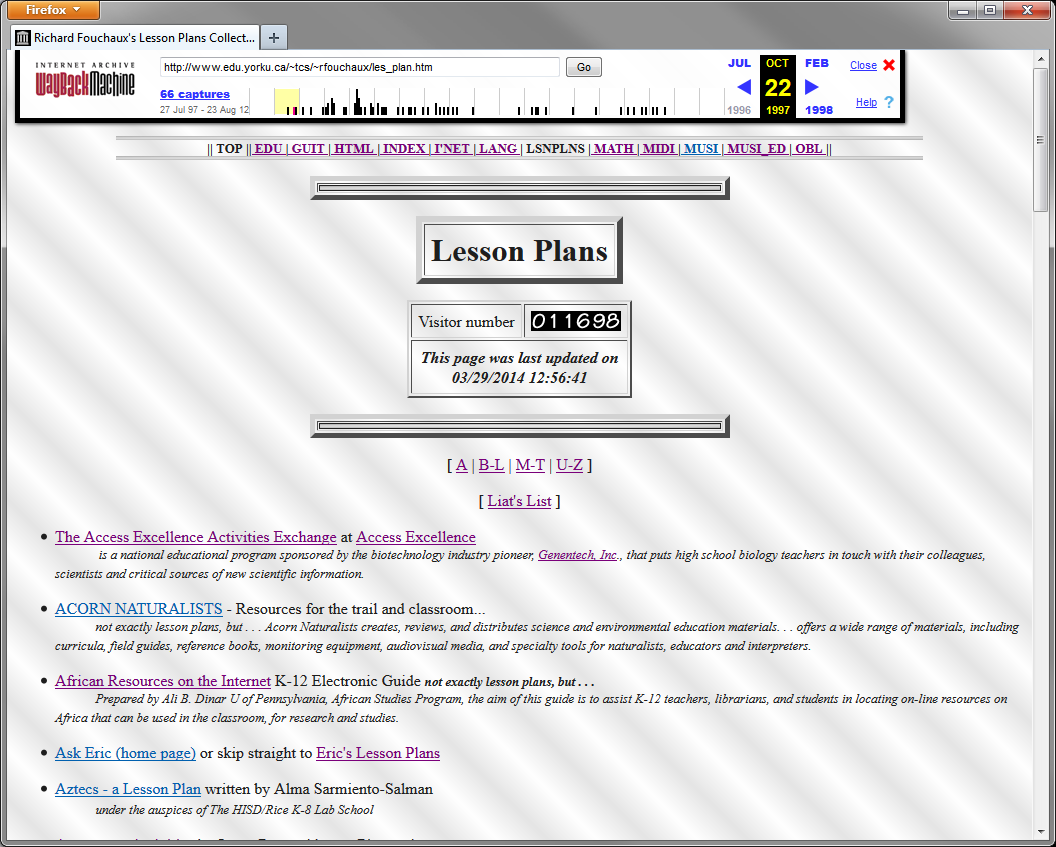
 Technology was there to support an idea or activity, and when an expert was needed to make the technology work it was “facilitating a situation” and “enhancing the learning environment”, not “directing technology.” In every situation it was student-centered. But we were also teachers: of the students in our host classrooms, often of our host teachers—always of ourselves, always of each other. We call reading and writing, “literacies,” and we generally expect to acquire them in great part by a process sometimes called “schooling,” but we see that it doesn’t always work, and in fact can often be gained by “learning” in other ways, generally not called “schooling.”
Technology was there to support an idea or activity, and when an expert was needed to make the technology work it was “facilitating a situation” and “enhancing the learning environment”, not “directing technology.” In every situation it was student-centered. But we were also teachers: of the students in our host classrooms, often of our host teachers—always of ourselves, always of each other. We call reading and writing, “literacies,” and we generally expect to acquire them in great part by a process sometimes called “schooling,” but we see that it doesn’t always work, and in fact can often be gained by “learning” in other ways, generally not called “schooling.”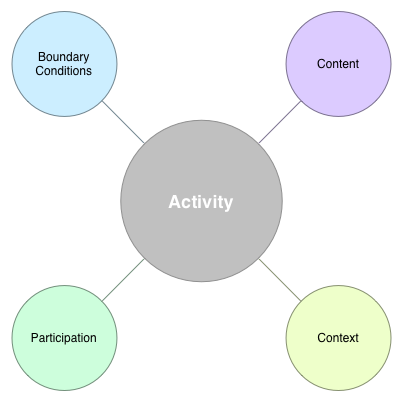
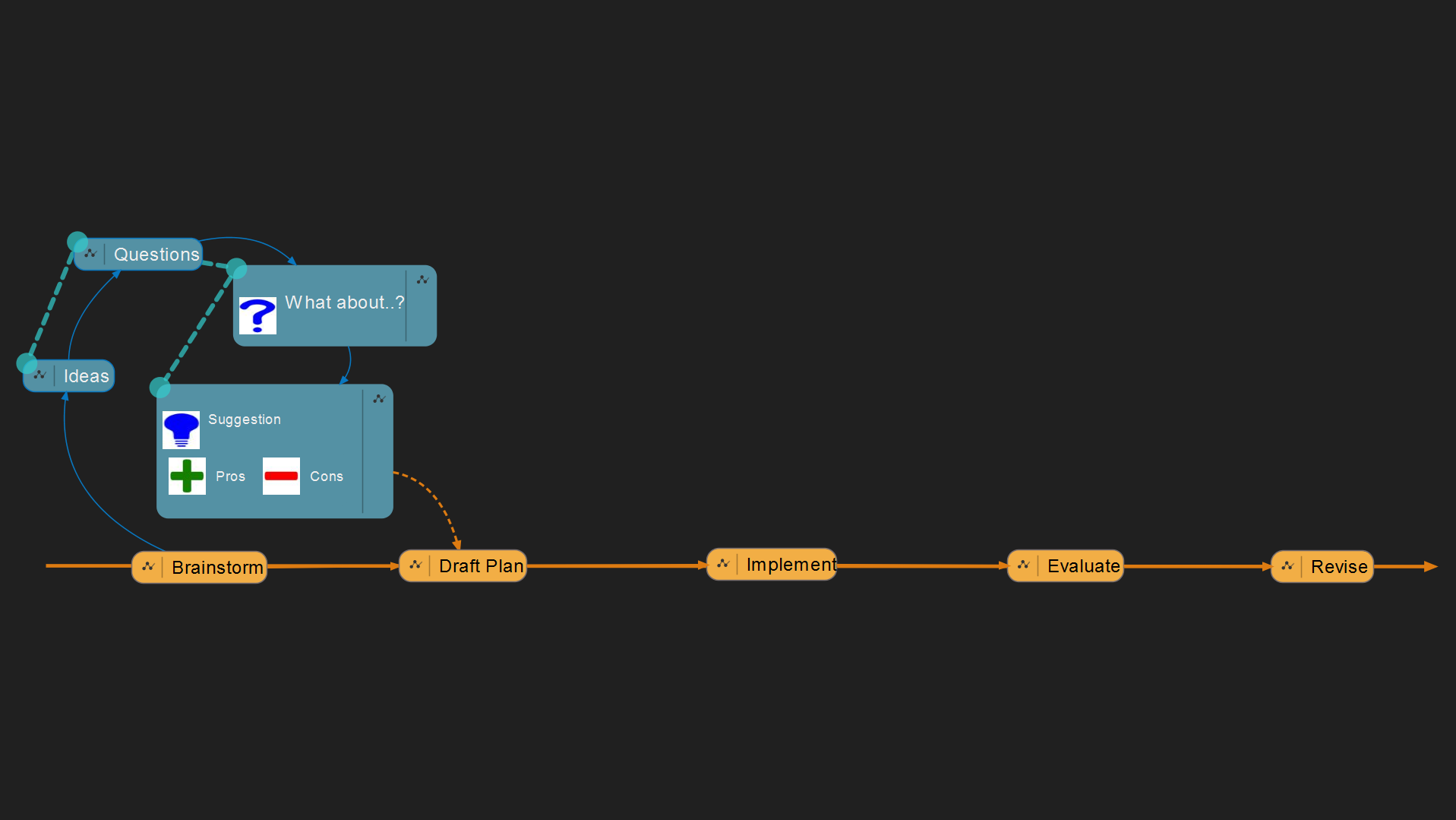
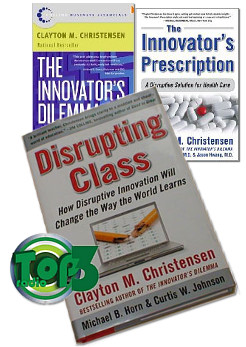
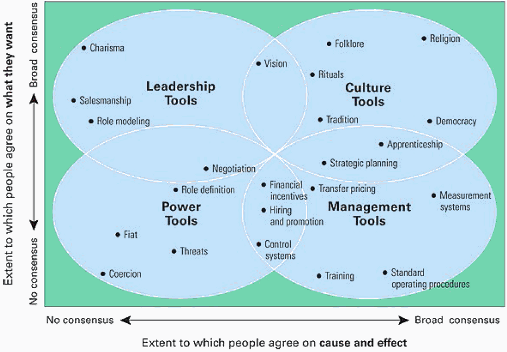
 My research into educational, mostly open source software tools identified ones that have proven multi-tasking abilities within “authentic” learning situations (Conole and Fill, 2005; Conole, 2008). Among these, the so-called “Mind Mapping” tools stand out for what I think are several very good reasons. The image to the right, a “mind map” of a recent research project, shows the good, the bad and the ugly.
My research into educational, mostly open source software tools identified ones that have proven multi-tasking abilities within “authentic” learning situations (Conole and Fill, 2005; Conole, 2008). Among these, the so-called “Mind Mapping” tools stand out for what I think are several very good reasons. The image to the right, a “mind map” of a recent research project, shows the good, the bad and the ugly. 